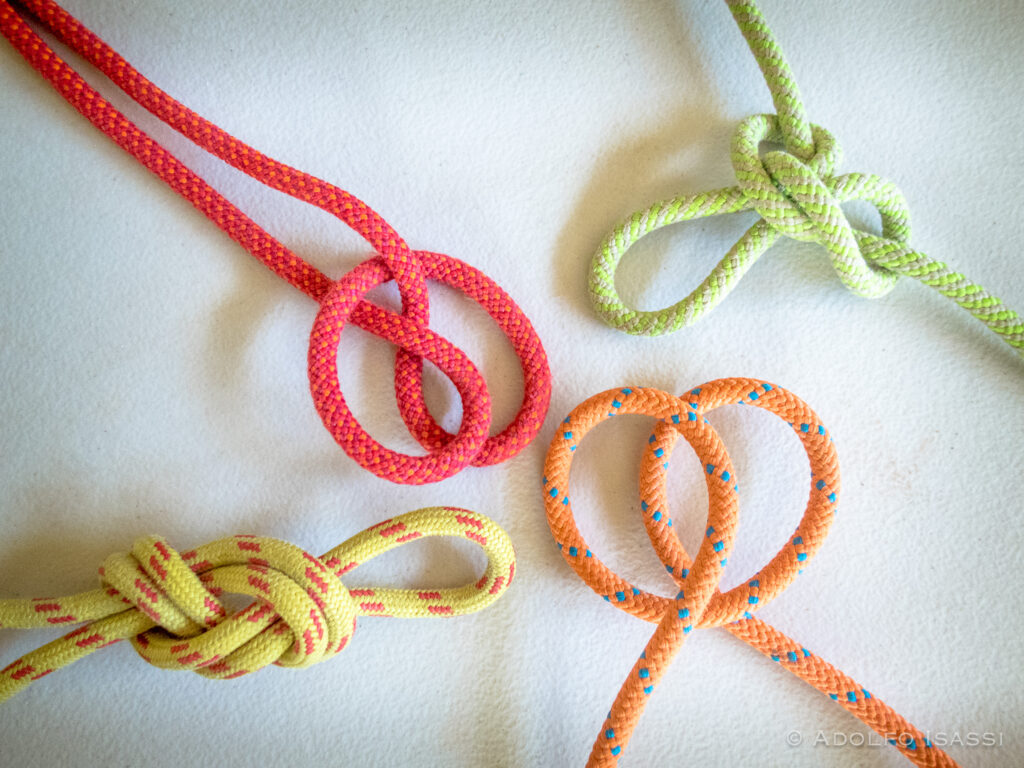
During the few years that I have spent as a canyoneering instructor, I have been able to gather some observations regarding teaching how to tie knots:
- Some students seem to have an innate ability to learn knots, while others have to put more effort into learning them.
- Some knots are easier to teach (figure 8) while others are notoriously hard to learn (Munter) and retain.
- A knot can be learned, but if the students position relative to the knot changes, student struggles again tying the knot,
These observations lead me to suspect that “spatial awareness” (our ability to place shapes and objects in a three dimensional space) may be the key to better understand how to teach knots and make the time spent in this task more effective.
To my surprise several neuroscientists have already studied this specific subject by performing Neuroimaging on people while tying knots, to observe what parts of our brains light up during knot tying.
[Studies summary]
Learning to tie knots involves various cognitive abilities, including:
- Spatial Awareness:
Understanding how different parts of the rope relate to each other in three-dimensional space is crucial. This includes recognizing overhand, underhand, loops, and twists. - Fine Motor Skills:
Precise hand movements are necessary to manipulate the rope and tie knots accurately. This involves coordinating the muscles in your fingers and hands. - Sequential Thinking:
Knot tying often follows a specific sequence of steps. Being able to remember and execute these steps in the correct order is important. - Problem Solving:
Choosing the right knot for a specific purpose requires assessing the situation and selecting an appropriate knot based on factors like strength, security, and ease of untying. - Visual Perception:
Recognizing the visual cues and patterns of the knot is crucial. This includes identifying how loops and ends should interact. - Memory:
Remembering the steps and techniques for tying various knots is important for retaining this skill over time. - Attention to Detail:
Paying close attention to the size, shape, and position of the loops and turns in the rope is essential for tying knots correctly. - Spatial Reasoning:
Understanding how the knot will function once tied, considering aspects like how it may tighten or loosen under different conditions. - Kinesthetic Learning:
Many people learn to tie knots through hands-on practice, which involves a combination of tactile feedback and muscle memory.
Overall, learning to tie knots is a multifaceted skill that engages various cognitive abilities, combining physical dexterity with mental processes like spatial awareness, memory, and problem-solving.
[End of summary]
How instructors can use this knowledge:
- For beginners, it seems important to focus on Spatial Awareness, Sequential Thinking, and Kinesthetic Learning.
- For Intermediate students, introduce them to Problem Solving and Spatial Reasoning.
- Identify the students with “good hands” i.e the ones with good Fine Motor Skills and get them to learn a knot by following the Sequential Thinking, Spacial Awareness
- Identify what cognitive aspect of learning a knot is a challenge for a particular student.
For self-learners and students learning online:
- Take notice of the cognitive abilities listed, and do an honest self-assessment and identify the one(s) that need extra attention. This may lead to improvement and faster knot learning.
References:
A manifold of spatial maps in the brain
Neural Representations of Procedural Knowledge
Learning to tie the knot: The acquisition of functional object representations by physical and observational experience
